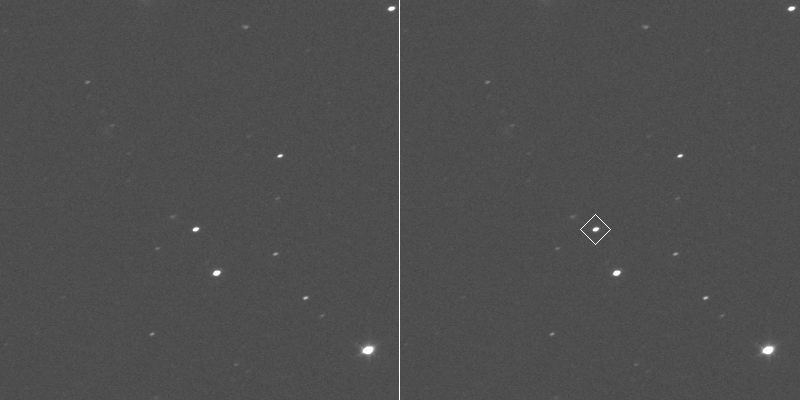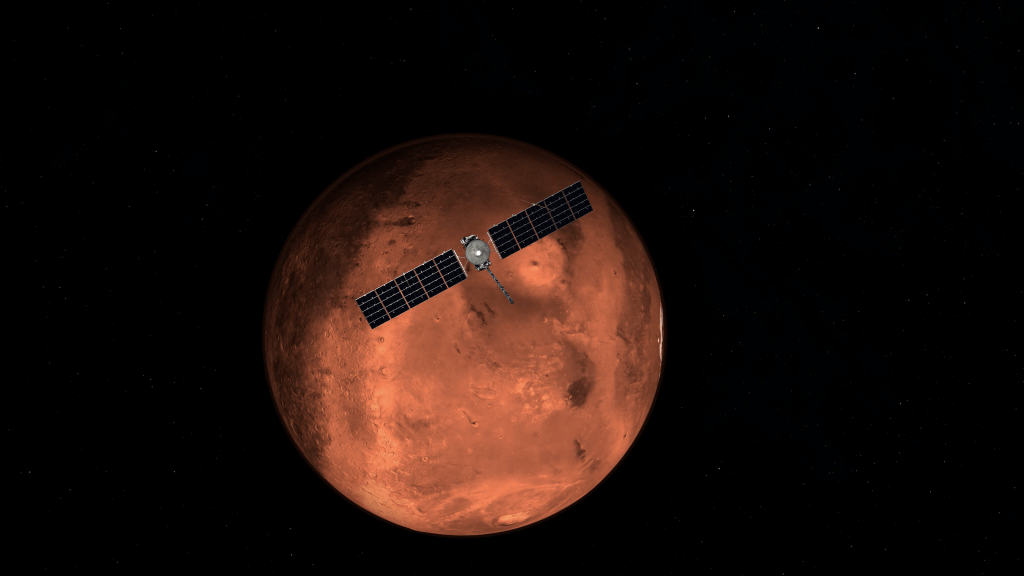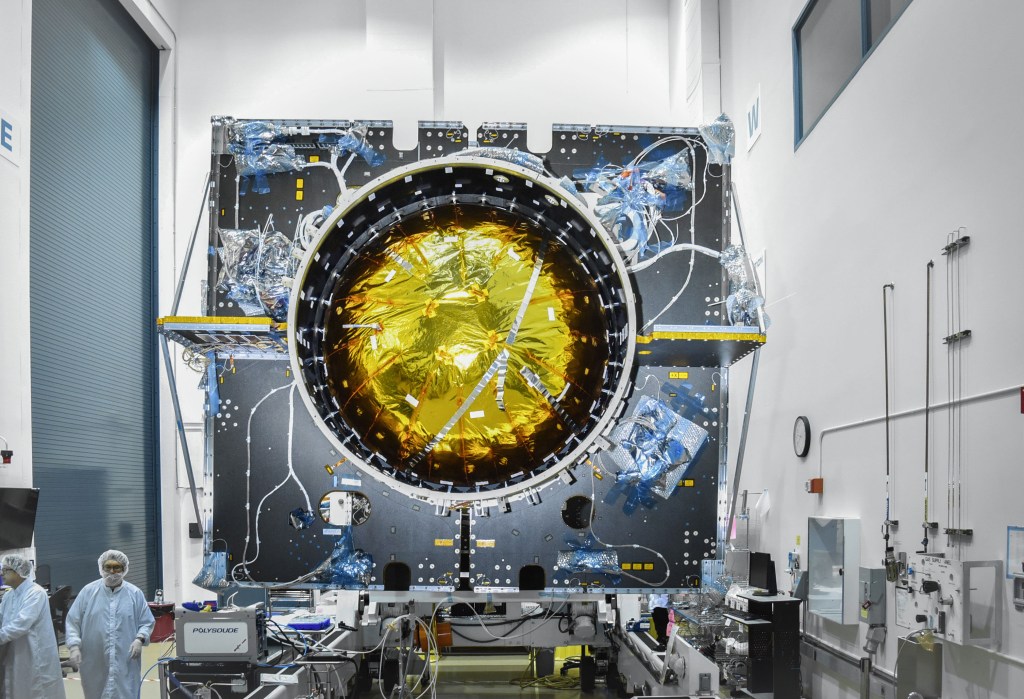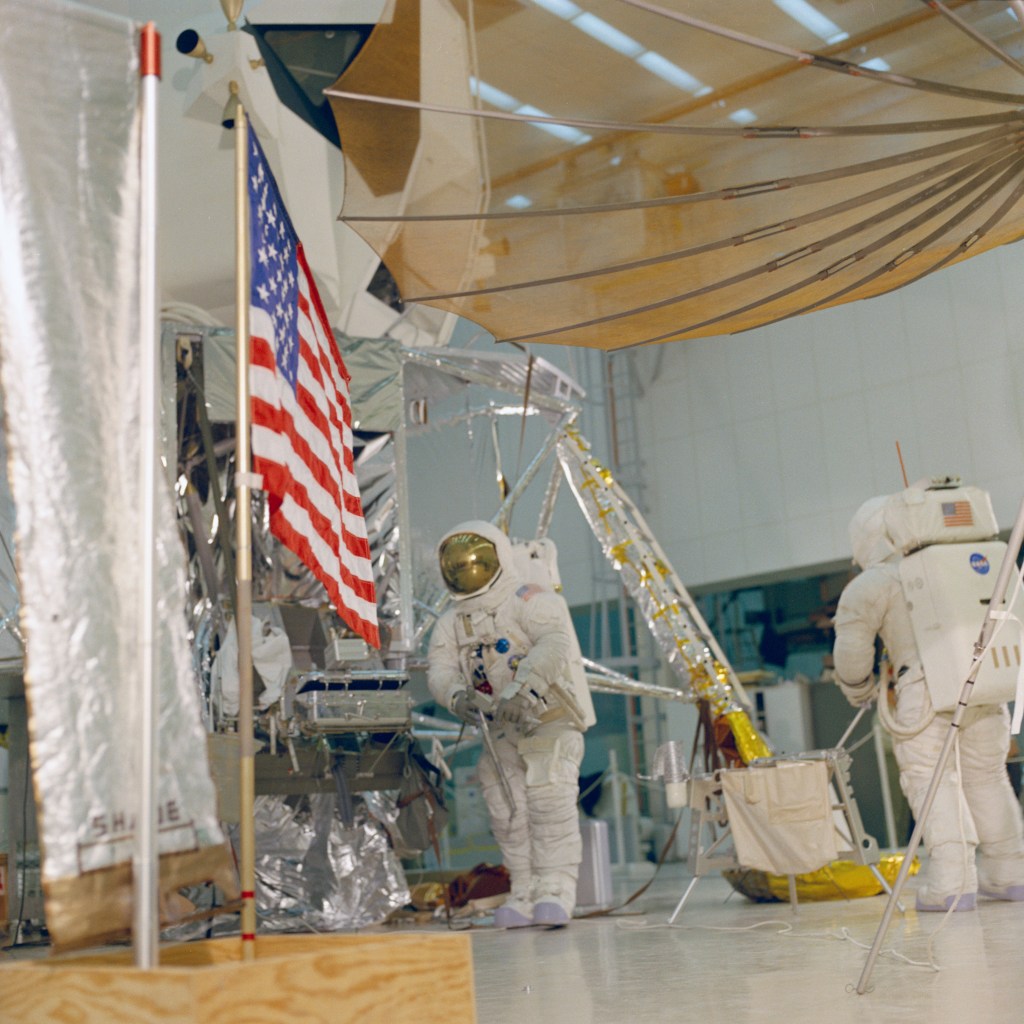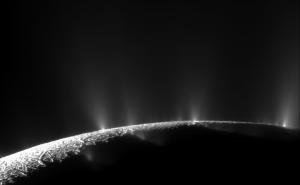Cassini is currently orbiting Saturn with a period of 13.9 days in a plane inclined 0.6 degree from the planet's equatorial plane. The most recent spacecraft tracking and telemetry data were obtained on Oct. 19 using the 70-meter diameter DSN station in Australia.
Cassini is currently orbiting Saturn with a period of 13.9 days in a plane inclined 0.6 degree from the planet's equatorial plane. The most recent spacecraft tracking and telemetry data were obtained on Oct. 19 using the 70-meter diameter DSN station in Australia. The spacecraft continues to be in an excellent state of health with all of its subsystems operating normally except for the instrument issues described at http://saturn.jpl.nasa.gov/news/significantevents/anomalies .
The Enceladus encounter E-20 went perfectly. Cassini made all the planned twists and turns on the way past the small icy body's northern hemisphere, while its science instruments acquired data to store aboard the solid-state recorders. Every bit of data was then played back and captured on Earth without loss or degradation. But that's become the norm for Cassini's operations. Using NASA’s powerful Deep Space Network, data losses are fairly rare despite the immense distance across interplanetary space, not only for Cassini, but with many other spacecraft in the solar system and beyond.
Enceladus's north polar regions revealed their secrets for the first time this week; springtime sunlight is flooding areas that have been in the wintery dark since Cassini arrived in the Saturn system over a decade ago. One of the resulting images, showing Enceladus's crazed northern terrain, was featured on Thursday; the page is linked below under Oct. 15. In the mean time, Cassini scientists have made a list: Enceladus's Top 10 Science Results are described and illustrated here:
http://saturn.jpl.nasa.gov/news/cassinifeatures/feature20151013 .
Wednesday, Oct. 14 (DOY 287)
Cassini's Composite Infrared Spectrometer (CIRS) called the shots for nearly six hours today, rotating the spacecraft to slowly track Saturn's large icy moon Dione. It made slow scans across the nighttime side, searching for anomalously warm regions that would be indicative of endogenic activity on the 1,123-kilometer wide moon. While CIRS was in control, all the other optical remote-sensing (ORS) instruments, which all point in the same direction, took data as well. These are the Imaging Science Subsystem (ISS), the Ultraviolet Imaging Spectrograph (UVIS), and the Visible and Infrared Mapping Spectrometer (VIMS).
ISS took control next, as Cassini closed to within 127,000 km of enigmatic Enceladus. With the other ORS instruments riding along, it began a series of observations for the E-20 encounter. Moving quite rapidly with respect to its target, only 3.7 hours into the observation the spacecraft had traversed the distance, and passed its closest-approach to Enceladus at 1,845 km above the surface. The ORS instruments then looked back towards the fast-receding 500-km diameter moon. The encounter page has more detail at http://saturn.jpl.nasa.gov/mission/flybys/enceladus20151014 .
The Cosmic Dust Analyzer (CDA) was next in line to control spacecraft pointing; it spent 3.6 hours measuring the trail of dust grains from Saturn's small moon Pallene as Cassini gradually crossed through the moon's orbital path. Results are expected to provide information on the impact ejecta process responsible for the trail, as well as on surface properties of Pallene.
About halfway through CDA's observation, Cassini passed periapsis in its Saturn orbit #223. It came as close as 114,800 above Saturn's visible limb; this is just outside the G ring. It was traveling 71,970 km per hour relative to the planet, more than 11 times its speed at last week's apoapsis.
After CDA's observation wrapped up, ISS turned back towards Enceladus just in time to catch the predicted periodic increase in plume activity, a phenomenon which is still unexplained. The observation lasted 75 minutes, with the other ORS instruments riding along.
Thursday, Oct. 15 (DOY 288)
Today was the 18th anniversary of Cassini's launch from Earth.
The bright blue star Zeta Orionis, the middle of the three stars in Orion's belt, was occulted behind Saturn's atmosphere. UVIS observed the event for 87 minutes. These opportunities are especially valuable because they provide detailed vertical profiles of the constituents and temperature in the region of upper atmosphere where the heating mechanism is still unexplained, and where much of the conversion of methane to other hydrocarbons occurs. Near-equatorial observations like this one are also important for mission operations, because they give a measure of the atmospheric density where Cassini's instruments will sample it directly during the final five orbits in 2017.
Turning back to Enceladus, ISS led the other ORS instruments in observations of its south-polar plume for just over seven hours. The plume's activity was expected to slowly decrease during the observation.
Finally, ISS and VIMS turned to track Hati, one of Saturn's 38 known outer irregular moons; a further description appears on this page: http://go.nasa.gov/1GHtjdO . The observation, from a distance of about 12 million km, lasted just under five hours.
Today's news feature is all about early results from the Enceladus E-20 encounter: http://saturn.jpl.nasa.gov/news/newsreleases/newsrelease20151015 .
Friday, Oct. 16 (DOY 289)
UVIS spent 100 minutes mapping out a radial profile of Saturn’s atmosphere. When this was done, UVIS led a 28-hour observation of Saturn’s aurora while the other ORS instruments participated.
Saturday, Oct. 17 (DOY 290)
Saturn is too low in the western sky these evenings for satisfactory telescope viewing from Earth's surface. After superior conjunction late next month, the ringed giant will begin to grace the early morning eastern sky, becoming visible again for early rising viewers by January. During next year's appearance, the rings will be open towards us even wider than they have been this year.
Sunday, Oct. 18 (DOY 291)
ISS spent one hour observing the transit of Saturn's 1,060-km diameter icy moon Tethys as it passed in front of slightly larger Rhea; VIMS rode along. (Last week it was a transit of Rhea across Tethys.) Following this event, Cassini's Navigation team used ISS to make images of Saturn's small moon Mimas for optical navigation purposes.
Monday, Oct. 19 (DOY 292)
CIRS observed Saturn’s atmosphere in the mid-infrared part of the spectrum to determine upper-troposphere and tropopause temperatures. When this was completed, Cassini turned and fired its small rocket thrusters on command from Earth, executing Orbit Trim Maneuver (OTM)-426. The burn lasted 70 seconds and provided a change in velocity of 70 millimeters per second, targeting for the next Enceladus flyby (E-21): the spacecraft will reach an altitude of 49 km above the icy surface and speed through the south-polar plume to analyze its content on Oct. 28.
Scientists convened at JPL today to begin the 67th Cassini Project Science Group Meeting, which will continue until Friday the 23rd.
Among Saturn's rings, the F ring stands out. Its particles rush around Saturn once about every 15 hours, in a thin band just outside the main rings; they're often showing some puzzling event, like the one in this image featured today: /resources/16257 .
Tuesday, Oct. 20 (DOY 293)
Cassini’s Magnetospheric Imaging Instrument (MIMI) had the spacecraft roll about its longitudinal axis for 12 hours today to study Saturn’s inner magnetosphere.
On three occasions this week, ISS conducted Saturn storm-watch observations; VIMS rode along with two of them. All were two minutes long, squeezed in while the optical instruments were already pointing at or near the planet. Throughout the week, and largely independent of which direction the spacecraft was turning to point its other instruments, the Magnetospheric and Plasma Science (MAPS) instruments continued collecting data about the spacecraft's environment.
During the week, the Deep Space Network communicated with and tracked Cassini on seven occasions, using DSN stations in Australia and Spain. A total of 156 individual commands were uplinked, and about 1,694 megabytes of telemetry data were downlinked and captured at rates as high as 110,601 bits per second.
This illustration shows Cassini's position on Oct. 20: http://go.nasa.gov/1jOtfUE . The format shows Cassini's path over most of its current orbit up to today; looking down from the north, all depicted objects revolve counter-clockwise, including Saturn along its orange-colored orbit of the Sun.

